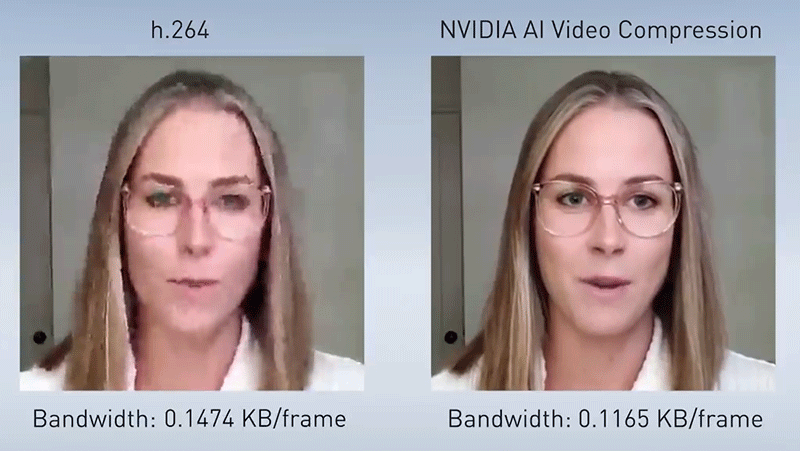Using AI, Nvidia helps you get surprisingly beautiful images every time a video call
- Tram Ho
The Covid-19 pandemic is forcing many people to work remotely instead of going to offices. However, there are still thousands of reasons why users hate appearing during video calls with colleagues, one of which is that ugly video compression algorithms sometimes make your face unrecognizable. .
Nvidia has a solution to this problem, but instead of fixing video compression algorithms, it wants to use neural networks to recreate your face in real time.

As with internet video streaming services, such as YouTube or Netflix, video compression algorithms are used to reduce the amount of bandwidth needed to ensure video calls still take place under any network speed conditions.
To do so, these algorithms use a variety of tricks, including reducing the color standard, reducing the frame rate and interpolating them afterwards, or even reducing the resolution of the video – which often makes people look like they’re calling each other on ’90s webcams. While video compression algorithms have barely improved over the years, Nvidia is showing their solutions to such strides. Come on.
Nvidia calls this new solution AI video compression. Instead of sending a series of video signals to the internet at 15 to 30 frames per second, it sends only a very small number of frames at a specific time interval, also known as keyframes.
The video introducing the video call solution retains the image quality of Nvidia.
If you watch a video with these keyframe frames, you will feel like watching a jerky slideshow, but this also helps the system analyze, extract, and share data about locations and transfer. motion of specific points on the subject’s face, to form a stream of data when compared with other data.
On the receiving side, an artificial neural network powered by powerful graphics cards uses these data points to produce additional frames between keyframe frames. This will produce a smooth motion video with no blurring as often seen in video compression algorithms.
Not only do users get better images, Nvidia researchers estimate that the bandwidth required for video streaming using AI video compression could be reduced by only 1/10 of the bandwidth for compressing videos. Conventional video standards like H.264.
This means that even if you have to video call on your smartphone with uneven data signal, your beauty will be preserved if the recipient is in the office with a fast, strong and stable internet connection. not be taken up too much monthly space for this feature.
See Gizmodo
Source : Genk
